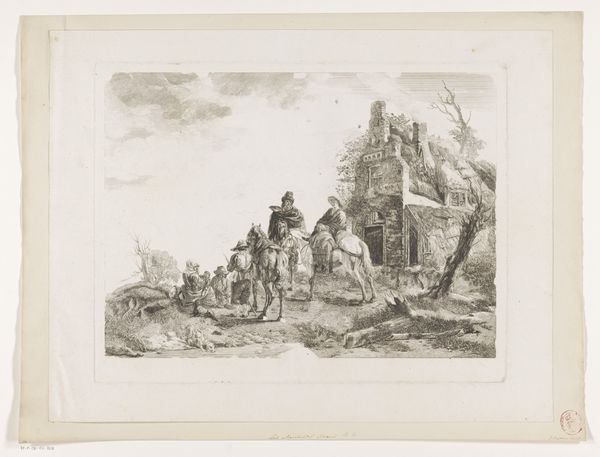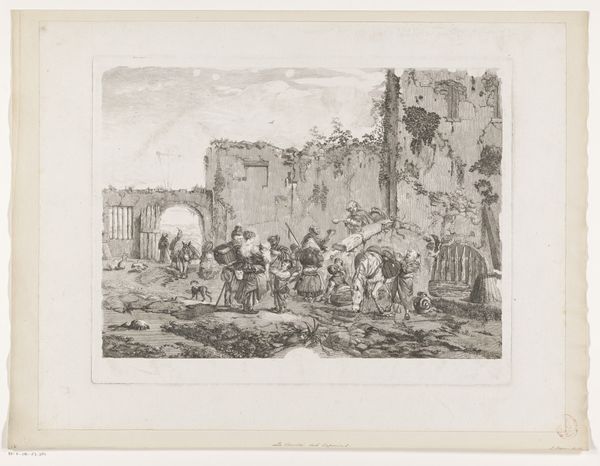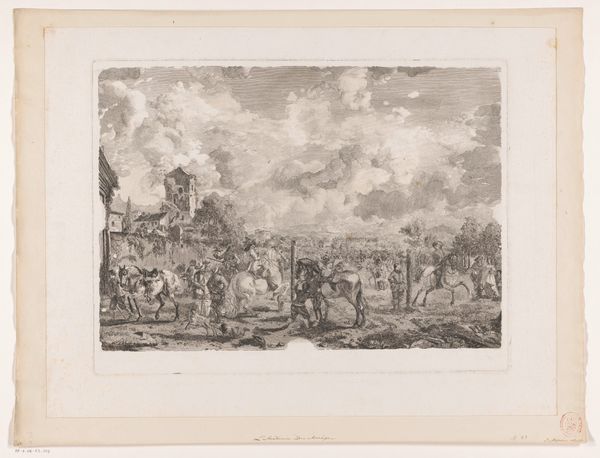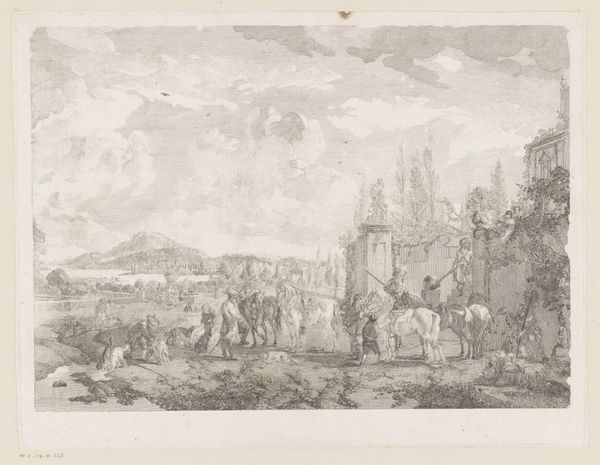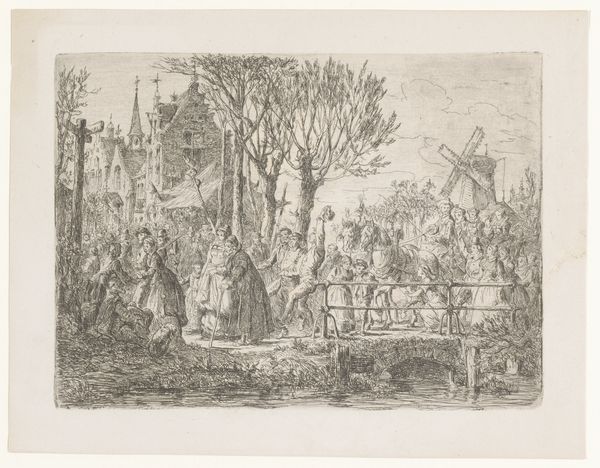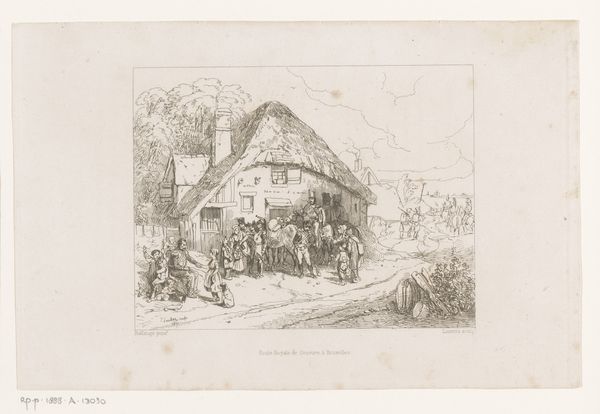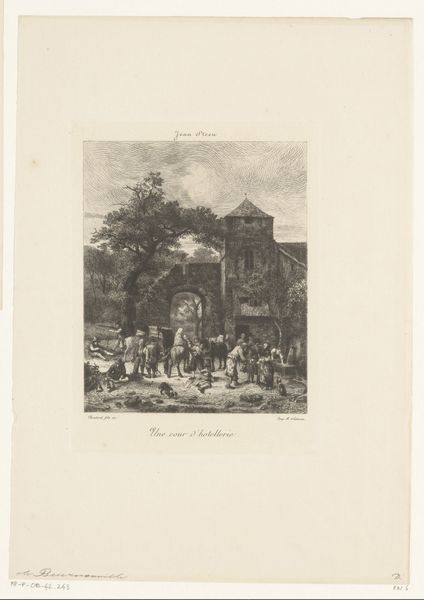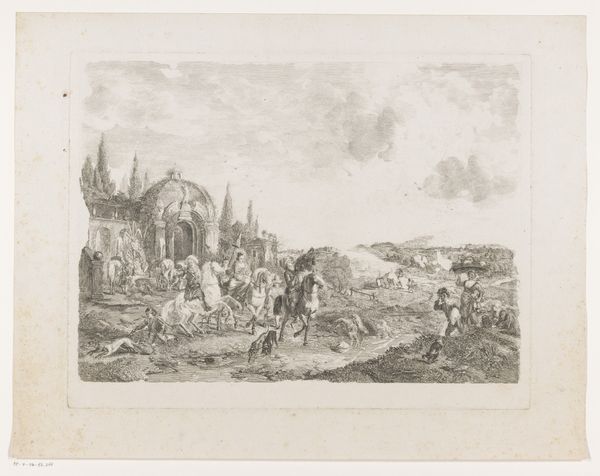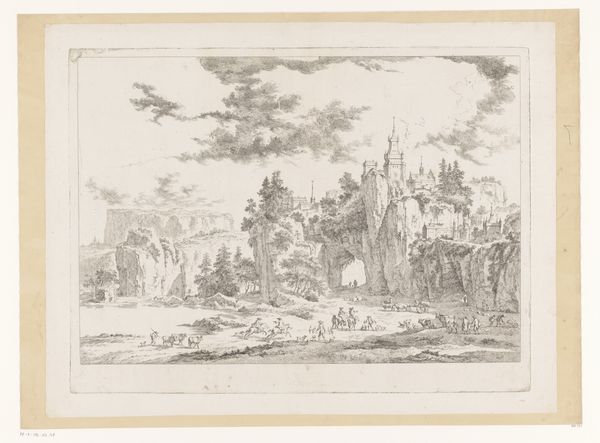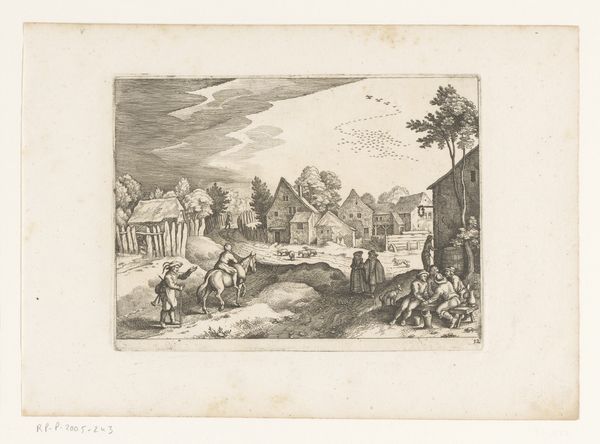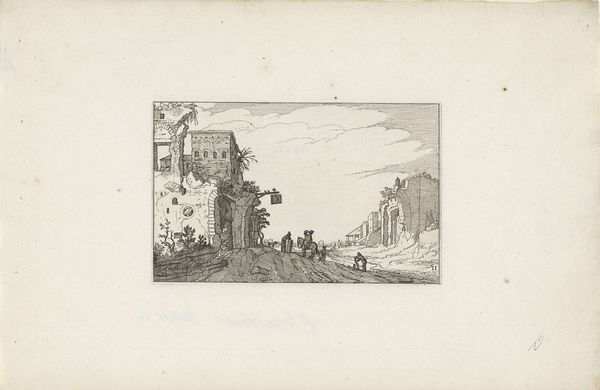
print, etching
#
baroque
# print
#
etching
#
landscape
#
etching
#
genre-painting
Dimensions: height 360 mm, width 476 mm
Copyright: Rijks Museum: Open Domain
Curator: What a remarkably busy scene! I am drawn immediately to its intricate details and energy. It is a very evocative rendering of what I imagine to be a specific space and time. Editor: Agreed. Jean Moyreau's "Dorpstheater," an etching from 1743 currently held at the Rijksmuseum, captures that feeling of daily life, doesn't it? Looking at it now, I am compelled to investigate how genre-painting and baroque styles reflected social conditions and realities of the 18th century, in Europe specifically. Curator: Tell me more about the significance of those baroque sensibilities. I cannot help but observe the man theatrically gesturing from atop what seems to be a makeshift stage or elevated market stall, with an almost divine quality, which makes me question performance and social hierarchies embedded in rural communities of this era. What could that mean? Editor: Perhaps. It seems relevant to ask whether this theatrical presentation reproduces, disrupts, or legitimizes power relations and expectations of this specific location and era. Theatrics aside, if we examine the details of their garments and demeanors closely, do we note clear indicators of distinct social positions? Curator: It does seem a little busy, even overwhelming in a way that might mimic the experience of arriving in a crowded marketplace for the first time. But if you examine this etching using symbolic terms, what are the important elements you see? Is there a central object of reverence? Is the image organized in a way that might reveal an underlying symbolic order? Editor: Consider, for example, the parasol that is strategically placed above the performance area—perhaps as protection from weather elements? Could this suggest a reference to status, protection, or even divine patronage? Even the tree on the periphery has symbolic density for its long use of symbolizing wisdom and resilience. Curator: You see so much hidden symbolic context there. Editor: Such symbolic languages can grant insight into the psychological and emotional lives of the time, providing alternative approaches for interpreting the realities faced in society, especially those related to its artistic practices and forms of collective behavior. In short, Moyreau gives us not just a village scene but also access to layers of the social, political, and emotional investments in that scene. Curator: Seeing "Dorpstheater" with you offers so many potential lenses through which we may appreciate a specific period in time by considering it in the context of societal structure. Thank you! Editor: My pleasure! Considering it as an intersection of symbol and culture provides new approaches through which the scene might take form, even for the contemporary listener.
Comments
No comments
Be the first to comment and join the conversation on the ultimate creative platform.
